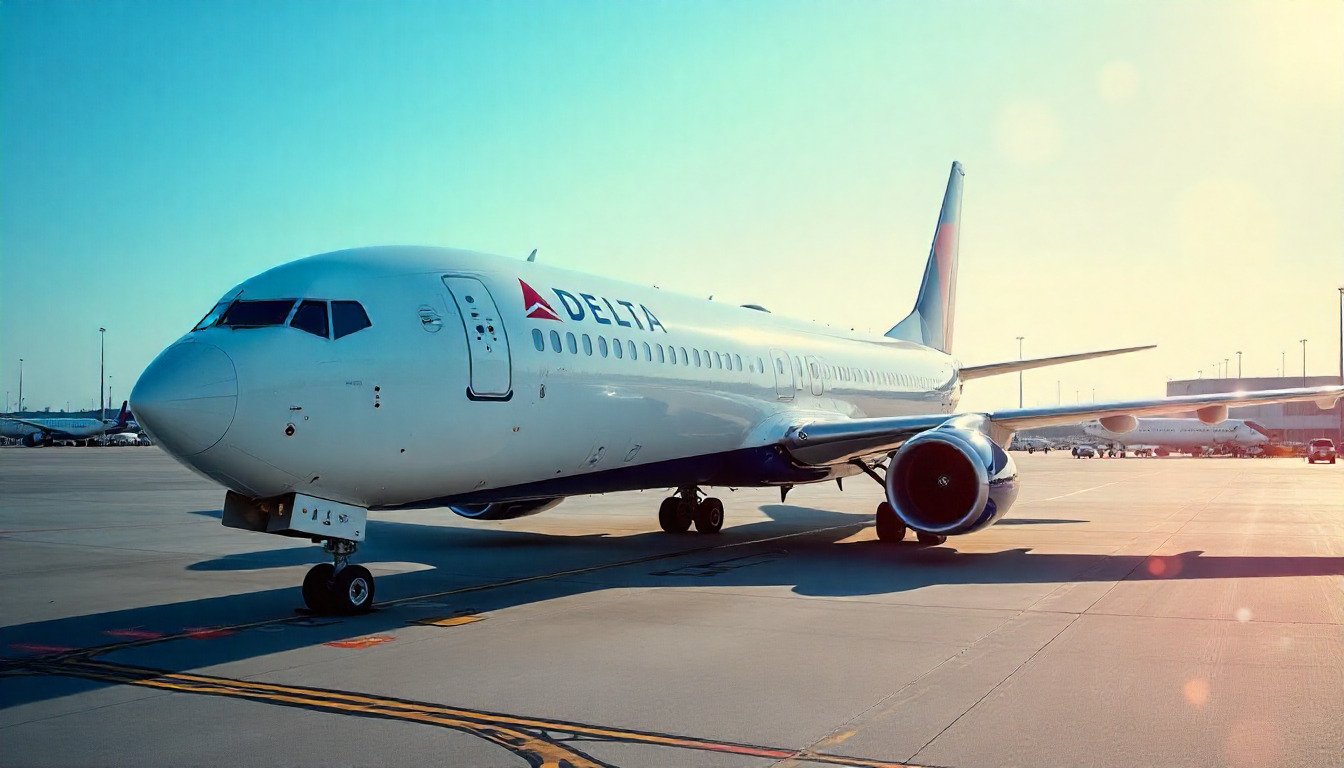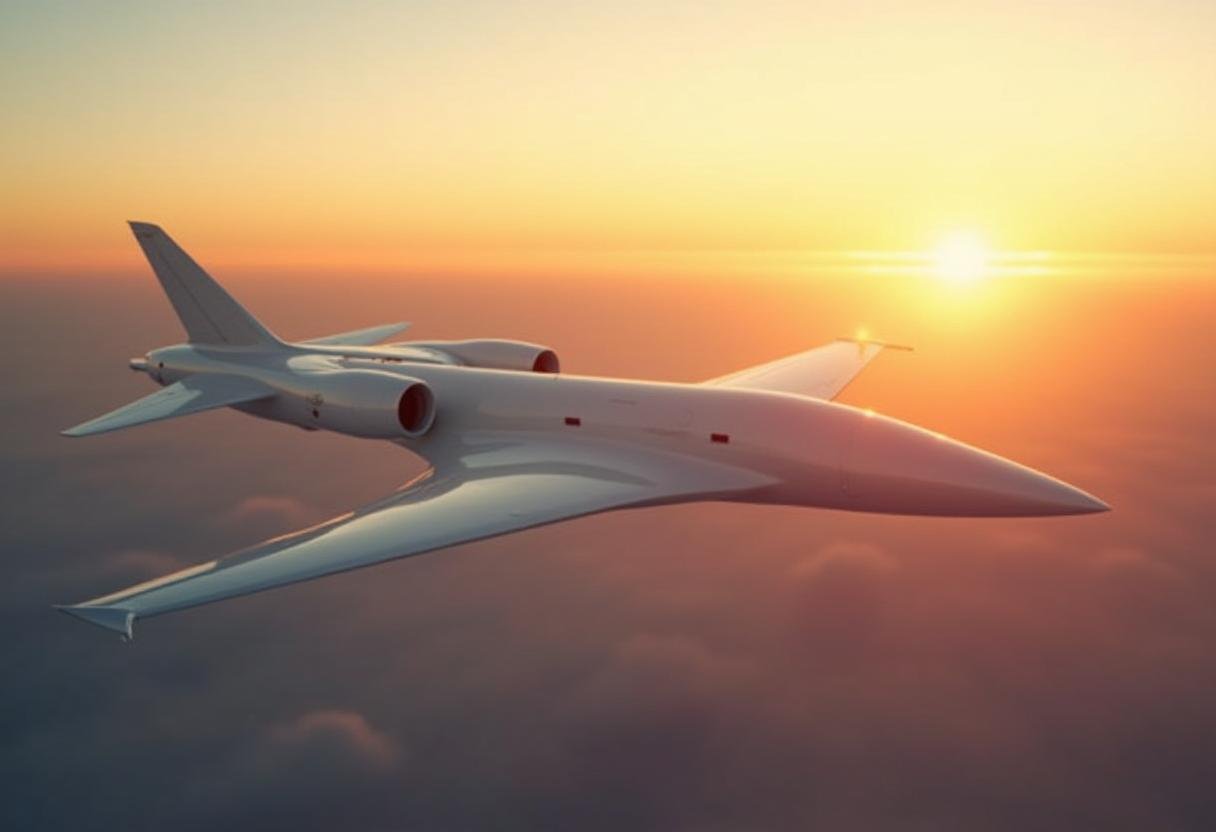Flight Buzz
Flybondi’s Direct Flights from Buenos Aires to Encarnación, Paraguay, Set to Boost Tourism and Strengthen Regional Ties – Travel And Tour World

Flight Buzz
Delta, Spirit, American, and JetBlue Cut Flights in New York, Florida, Nevada, and Others, Shaking Up Travel in US as Tourism Declines Continuously Amid Low Demand

Wednesday, August 6, 2025
US tourism is plummeting in 2025, sending shockwaves throughout the travel industry. Major airlines such as Delta, Spirit, American, and JetBlue are slashing flights in travel hotspots like New York, Florida, Nevada, and others, due to a mixture of low demand and shifting travel habits. The reduction in international tourism due to political and economic strain, as well as changes in how the world travels, has led these airlines to scale back international flights. Fewer international flights are available, and with international tourism dropping, there is chaos for travelers. These cuts are just one more indicator of the declining tourism sector in the US as the nation struggles to draw in international visitors with its economic state.
Airlines Adjust to Fewer Travelers
It’s no secret that fewer tourists are coming to the U.S. these days. As the flow of international visitors keeps dropping, airlines are cutting routes in areas that have seen the most dip in travel. Big markets like New York, Florida, and Nevada have taken a huge hit.
Spirit Airlines? They’re struggling the most. After filing for bankruptcy protection, Spirit came out of Chapter 11, but they’re not in the clear yet. They’re cutting a big chunk of their flights—around 26% of what was planned for the third quarter of 2025. The usual suspects are being affected:
- Fort Lauderdale: 15% fewer flights
- Orlando: 5% fewer flights
- Las Vegas: 42% fewer flights
- Newark: 21% fewer flights
- Houston Intercontinental: 30% fewer flights
- Atlanta: 26% fewer flights
- Los Angeles: 45% fewer flights
- Dallas/Fort Worth: 42% fewer flights
- Baltimore: 24% fewer flights
If you were planning a budget getaway to Florida or Nevada, well, you might want to rethink things. With fewer cheap flights, it’s gonna be harder to stretch that travel budget.
JetBlue Shifts Gears Too
JetBlue isn’t immune. They’ve decided to shut down all their flights from Miami International Airport starting September 2, 2025, shifting things over to Fort Lauderdale-Hollywood instead. Miami’s been tough for them to make money in, what with the fierce competition from other major airlines like Delta and American. So, Fort Lauderdale gets the nod.
But that’s not all. JetBlue is also cutting back on flights from Seattle-Tacoma International to Boston and New York, turning what was a year-round service into just a seasonal one. Starting in October 2025, those flights will only run during the summer months. Guess they’re trying to make it work where they can.
American Airlines Scraps Routes, Too
American Airlines has jumped on the bandwagon. They’ve hit pause on several major transatlantic routes for winter 2025. If you had plans to fly from New York to Paris or from Dallas/Fort Worth to Frankfurt, you’ll be out of luck. Same goes for these routes:
- Philadelphia (PHL) to Zurich
- New York (JFK) to Milan
- Charlotte (CLT) to Munich
- New York (JFK) to Madrid
And if you’re heading to Miami, American’s cutting flights there too, starting August 11, 2025.
Delta Gets Hit, Too
And Delta Airlines? They’re not doing any better. They’ve trimmed back their transatlantic routes as well, reducing flights from JFK and Atlanta to some major European destinations for the winter 2025-26 season. Not only that, but they’ve also paused flights from JFK to Tel Aviv through August 31, 2025, thanks to security issues.
Oh, and if you were flying from LaGuardia to Dayton, Ohio, well, that’s getting the axe too. Starting September 7, 2025, that route will be no more.
US Tourism Just Keeps Dropping
The U.S. tourism industry can’t seem to catch a break. International travel just keeps slipping. In the first half of 2025, there was a 1.2% drop in international arrivals compared to the same time last year. The numbers aren’t looking pretty for some of the U.S.’s biggest travel markets either. Arrivals from Germany, Spain, the UK, Canada, South Korea, and Australia were all way down. Double digits down.
Even domestic tourism’s in the gutter. Take Las Vegas, for example. They saw a 7.8% drop in international visitors. With fewer people visiting, local businesses—especially hotels and casinos—are definitely feeling it.
Tourism Decline Means Big Economic Losses
This decline in tourism isn’t just hurting travelers, it’s also taking a huge toll on the economy. International visitor spending is expected to fall to $169 billion in 2025, down from $181 billion in 2024. That’s a drop of 22% from where things were before the pandemic hit. If this keeps up, the U.S. travel industry could lose thousands of jobs in hospitality and related sectors.
And let’s not forget about Canada. The 2025 boycott of the U.S. is making a real impact. Bookings from Canada to the U.S. are down more than 70% for the period between April and September 2025. The whole tariff situation has really taken a toll, leading to a 23% drop in Canadians crossing into the U.S. in February 2025 alone.
In 2025, Delta, Spirit, American, and JetBlue are slashing flights to major U.S. destinations like New York, Florida, and Nevada. Tourism’s been in a slump because people just aren’t traveling as much, the economy’s been up and down, and fewer international visitors are showing up.
So, where does U.S. tourism go from here?
The outlook for U.S. tourism in 2025 and beyond isn’t looking too rosy. Experts predict it could take years for things to bounce back, especially with the global and economic issues that are still weighing down the industry. With airlines like Delta, Spirit, American, and JetBlue cutting routes, it’s clear that the road to recovery is gonna be long.
If you were planning on hitting New York, Florida, or Nevada anytime soon, you might wanna check your flight options soon. Fewer affordable flights are available, and the competition for those last-minute deals will be tough. It’s probably a good idea to stay flexible and maybe start exploring alternative destinations.
As the U.S. tourism industry faces these hurdles, it’ll need to adjust and adapt to a changing landscape. Rebuilding international demand is gonna be key, but for now, it’s anyone’s guess how long this slump will last. Keep your fingers crossed and stay on your toes if you’re planning a trip to the U.S. in the near future.
Flight Buzz
The Future Of Air Travel: Boom Supersonic’s Overture To Revolutionize International Flights

Tuesday, August 5, 2025
The aviation industry is about to experience a significant change as Boom Supersonic, a U.S.-based aerospace company, works to bring supersonic passenger flights back. Nearly 22 years after the Concorde’s last flight, the Overture, Boom’s main aircraft, could redefine air travel by flying at almost twice the speed of sound. This promises a faster and more environmentally friendly way to cross oceans. With confirmed orders from major international airlines like American Airlines, United Airlines, and Japan Airlines, the Overture aims to create new routes and opportunities for travelers, making long-haul flights quicker and more efficient.
The Overture could connect key hubs like New York (JFK) and London (LHR), enabling passengers to travel in half the time compared to current planes. With its cutting-edge technology, sustainable engines, and modern design, the Overture is set to lead the next phase of supersonic flight. However, despite the excitement surrounding the aircraft, there are several challenges to its development and commercial use that need to be addressed before it can transform air travel.
Boom Supersonic Overture Aircraft Overview
Design and Technology Innovations
Boom Supersonic’s Overture showcases modern aerospace engineering, designed for transoceanic routes like New York-London and Tokyo-Seattle. It can reach speeds of Mach 1.7, which could significantly reduce flight times. For instance, the flight from New York to London, which takes about 7 hours today, could be completed in just over 3.5 hours with the Overture.
The Overture will use Symphony turbofan engines that are still under development but are expected to be highly efficient, capable of running on up to 100% sustainable aviation fuel (SAF). Developed by Boom Supersonic along with Florida Turbine Technologies, StandardAero, and GE Additive, these engines are projected to produce 35,000 pounds of thrust and achieve supersonic speeds without afterburners. This will greatly lower fuel usage and emissions.
Boom’s design includes innovative technology, such as a delta-gull wing shape and carbon-composite materials. These advancements not only enhance fuel efficiency but also decrease the aircraft’s weight, making it more environmentally sustainable. The Overture can reach a cruising altitude of 60,000 feet, well above the normal flight paths of subsonic aircraft, further boosting its speed and efficiency.
Environmental Responsibility
One key aspect that differentiates Boom’s Overture from the Concorde and other supersonic aircraft is its focus on environmental sustainability. The Overture is built to meet ICAO Chapter 14 noise standards, meaning it will produce a limited sonic boom during flight, allowing it to operate at major airports worldwide. This is a significant advancement in tackling one of the major issues faced by supersonic aircraft: the disruptive sonic boom.
By using SAF, the Overture aims to lower its carbon footprint, a crucial factor for an industry under pressure to lessen its environmental impact. The aircraft is designed to be quieter than earlier models, incorporating noise-reduction technologies in its structure and engines. This commitment to sustainability could help open the door to a new era of eco-friendly air travel.
Testing and Development Progress
XB-1 Demonstrator and Test Flights
Boom Supersonic started developing the Overture with the XB-1 demonstrator, a one-third-scale prototype that first went supersonic in January 2025. These test flights, conducted at Mojave Air & Space Port, are gathering valuable data on the aircraft’s aerodynamics, performance, and design. The XB-1 has already completed over a dozen test flights, confirming the stability and durability of Boom’s fuselage design and materials at high speeds.
NASA has been instrumental in supporting Boom Supersonic’s research. Using advanced Schlieren photography, NASA captured shock waves during test flights. This data has aided Boom’s progress in developing “boomless cruise” technology, which alters sonic booms in the atmosphere so they do not reach the ground. This is a major step toward achieving supersonic flight without the environmental issues tied to traditional supersonic aircraft.
Symphony Engines and Further Testing
The Symphony engines, which are essential to the Overture’s performance, are currently undergoing thorough testing. Additional tests are set for 2026. These engines will be crucial in determining Overture’s efficiency and sustainability. Boom Supersonic’s engineers are focused on creating engines that work without afterburners, ensuring a more fuel-efficient and environmentally friendly propulsion system.
The Symphony engines are also optimized for supersonic cruising speeds, enabling the Overture to reach Mach 1.3 during regular flight and potentially up to Mach 1.7 under certain conditions. The engines are designed to be adaptable, capable of using SAF, making Boom’s supersonic aircraft part of a more sustainable aviation future.
Orders and Industry Support
Confirmed Orders and Partnerships
The Overture has attracted attention from major airlines, securing confirmed orders from American Airlines and United Airlines. American has committed to ordering 20 Overture aircraft, with options for 40 more. United has ordered 15 aircraft, with an additional 35 options. Japan Airlines has also shown strong interest, placing pre-orders for 20 aircraft. The enthusiasm from these major carriers signals a promising future for supersonic commercial travel.
Boom Supersonic has formed partnerships with leading aerospace companies, including Northrop Grumman and Collins Aerospace. These collaborations are vital for establishing the supply chains and technical skills needed to make the Overture a reality.
Challenges and the Road Ahead
Certification and Regulatory Challenges
One of the main challenges facing Overture’s commercial launch is obtaining the necessary certifications from aviation authorities like the FAA and EASA. Supersonic aircraft have faced significant regulatory issues in the past, particularly concerning noise and environmental impact. Boom Supersonic is actively working with regulators to ensure the Overture meets all safety, environmental, and operational requirements.
Despite these challenges, enthusiasm for the Overture remains strong. The success of the XB-1 test flights and support from major airlines and aerospace firms have renewed interest in supersonic travel. With more testing planned in the coming years, Boom Supersonic is on track to make the Overture a reality by 2030.
Conclusion
Boom Supersonic’s Overture is set to bring a new era of supersonic travel, offering faster, more efficient, and environmentally sustainable air travel. With its innovative design, cutting-edge technology, and solid backing from major airlines and aerospace companies, the Overture could soon change how we fly. As testing progresses and regulatory approvals are pursued, Overture’s potential to reshape long-haul air travel remains an exciting prospect for the future.
(Source: Boom Supersonic, 2025 Development Update, Boom Supersonic Press Release)
Flight Buzz
Australia Deepens Strategic Travel Collaboration With India Through Marketplace 2025, Backed By Direct Flights, Digital Visas, And Targeted Campaigns

Tuesday, August 5, 2025
Australia is intensifying its strategic travel partnership with India through Marketplace 2025, a flagship tourism trade event designed to boost two-way visitor flows, strengthen industry ties, and drive economic growth. Backed by a growing network of direct flights, simplified digital visa processes, and highly targeted promotional campaigns, this initiative aims to tap into India’s rapidly expanding outbound travel market while positioning Australia as a top leisure and business destination for Indian travelers.
Australia is actively deepening its engagement with India’s booming outbound travel sector through the 19th edition of Australia Marketplace India (AMI), hosted by Tourism Australia from August 3 to 6 in the culturally rich city of Jaipur. This flagship business-to-business platform connects over 100 Indian travel buyers with 82 leading Australian tourism operators, paving the way for stronger collaboration and broader awareness of Australia as a premier long-haul travel destination.
This year’s event marks a significant expansion in participation from both sides, reflecting growing interest in luxury, family, and immersive travel from Indian consumers. Indian travel agencies have turned out in strong numbers to enhance their destination knowledge and build new partnerships, while Australian businesses have showcased a diverse range of tourism experiences – including accommodations, attractions, tour services, adventure experiences, and regional tourism boards.
Tourism Australia continues to position India as one of its highest-potential markets, targeting a new wave of affluent Indian travellers who seek premium holidays, authentic experiences, and seamless accessibility.
Targeted Campaigns Drive Demand in the Indian Market
Tourism Australia has developed a focused strategy to align with the changing travel interests of Indian audiences. Through a series of innovative marketing initiatives, it has spotlighted Australia’s diverse tourism experiences — including scenic coastal drives, wildlife adventures, vineyard escapes, gourmet journeys, and authentic Indigenous cultural attractions. These dynamic campaigns have significantly boosted Australia’s visibility and appeal among both new Indian travellers and returning visitors.
By adapting content and promotions specifically for Indian audiences, Tourism Australia continues to boost engagement across digital platforms, media outreach, and influencer content. These efforts aim to position Australia not only as an aspirational vacation destination but also as one that offers authentic, multi-generational and experience-rich holidays for Indian travellers.
Better Accessibility through Direct Flights and Digital Visas
India and Australia have made significant strides in improving travel access. The growing network of direct flights between major Indian cities and Australian hubs has greatly reduced travel time and increased travel convenience. Several international carriers now offer direct connectivity, allowing travellers to bypass long layovers and reach Australia with ease.
In parallel, the fully digital Australian visa system has transformed the pre-travel process, giving Indian travellers faster and more streamlined access to the country. These improvements have removed traditional barriers to long-haul travel, encouraging both leisure and business travellers from India to choose Australia over other destinations.
The combination of more flight options and faster visa processing has led to increased confidence among Indian travellers, who now view Australia as more reachable, practical, and welcoming.
The Indian Diaspora and Education Sector Reinforce Travel Ties
Australia’s rapidly expanding Indian diaspora continues to act as a major driver of tourism. With nearly one million residents of Indian origin and over 100,000 Indian students currently studying in Australia, the strong people-to-people ties between the two countries provide a consistent source of travel activity. Family visits, academic exchange, and social reunions ensure repeat visits and drive interest in new experiences across regions.
The community influence also helps Indian travellers feel a sense of familiarity, comfort, and cultural alignment with Australia. From Indian cuisine options and religious sites to inclusive festivals and multicultural cities, Australia’s hospitality landscape continues to evolve to accommodate the expectations of Indian visitors.
Upskilling Indian Agents Through Specialist Programs
Tourism Australia is heavily investing in the capacity-building of Indian travel professionals through structured trade engagement programs. The Aussie Specialist Program (ASP) serves as the foundation for training over 3,000 certified Indian agents, providing them with the knowledge and tools required to promote Australia with authority and insight.
Through platforms such as the Trade Resource Hub and Australia 365 On Demand, agents gain access to on-demand modules, product updates, destination videos, and itinerary-building resources. These platforms help agents remain competitive and informed in a fast-changing global travel market.
Tourism Australia also recognises top-performing agents by awarding them with the Premium Aussie Specialist designation. These elite professionals lead the way in selling high-value, experiential Australia travel products and serve as go-to consultants for Indian travellers seeking personalised and immersive itineraries.
Additionally, global trade events like the Australian Tourism Exchange and G’Day Australia offer Indian frontline agents and product developers the chance to experience Australia in person, further enriching their understanding of the destination.
Visitor Growth Reflects Market Maturity and Spending Power
India now stands among Australia’s top international tourism markets, securing the position of fifth-largest source country for inbound travel in the year ending May 2025. Data from the Australian Bureau of Statistics (ABS) shows that 453,000 travellers from India visited Australia during this period, reflecting a 10% growth compared to the previous year’s figures.
Indian travellers are not only arriving in greater numbers but also spending more. For the year ending March 2025, total spending by Indian tourists in Australia reached AUD 2.7 billion, representing a 14% rise from the previous year. This strong performance underscores the increasing value of the Indian market, particularly in the high-yield category.
Tourism Australia continues to prioritise long-term investment in this space, recognising the Indian market’s growing sophistication, spending capacity, and appetite for bespoke travel experiences.
A Shared Vision for the Future of Travel
The 19th edition of Australia Marketplace India affirms the joint commitment of both countries to develop sustainable, profitable, and culturally meaningful tourism links. As travel continues to rebound, the Australia-India tourism corridor stands out as a symbol of growth, opportunity, and mutual benefit.
Australia is strengthening its travel ties with India through Marketplace 2025, leveraging direct flights, digital visa access, and targeted campaigns to tap into India’s booming outbound tourism market and boost mutual visitor growth.
By bringing together trade professionals from both nations, the Jaipur event has not only driven business conversations but also strengthened the foundation for future tourism expansion. As Indian travellers seek more meaningful and premium international experiences, Australia remains strongly positioned as a destination that delivers on quality, diversity, and value.
-

 Brand Stories2 weeks ago
Brand Stories2 weeks agoBloom Hotels: A Modern Vision of Hospitality Redefining Travel
-

 Brand Stories2 weeks ago
Brand Stories2 weeks agoCheQin.ai sets a new standard for hotel booking with its AI capabilities: empowering travellers to bargain, choose the best, and book with clarity.
-

 Destinations & Things To Do2 weeks ago
Destinations & Things To Do2 weeks agoUntouched Destinations: Stunning Hidden Gems You Must Visit
-

 Destinations & Things To Do1 week ago
Destinations & Things To Do1 week agoThis Hidden Beach in India Glows at Night-But Only in One Secret Season
-

 AI in Travel2 weeks ago
AI in Travel2 weeks agoAI Travel Revolution: Must-Have Guide to the Best Experience
-

 Brand Stories1 month ago
Brand Stories1 month agoVoice AI Startup ElevenLabs Plans to Add Hubs Around the World
-

 Brand Stories4 weeks ago
Brand Stories4 weeks agoHow Elon Musk’s rogue Grok chatbot became a cautionary AI tale
-

 Brand Stories2 weeks ago
Brand Stories2 weeks agoContactless Hospitality: Why Remote Management Technology Is Key to Seamless Guest Experiences
-

 Asia Travel Pulse1 month ago
Asia Travel Pulse1 month agoLooking For Adventure In Asia? Here Are 7 Epic Destinations You Need To Experience At Least Once – Zee News
-

 AI in Travel1 month ago
AI in Travel1 month ago‘Will AI take my job?’ A trip to a Beijing fortune-telling bar to see what lies ahead | China

You must be logged in to post a comment Login